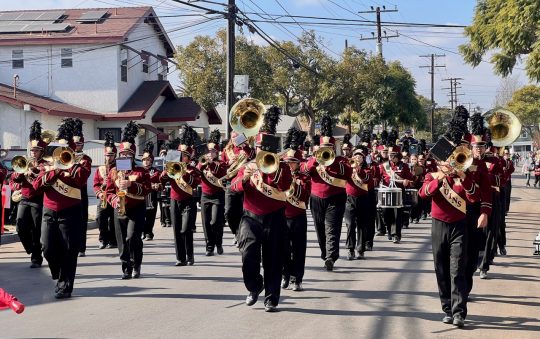Dear Governor Jerry Brown,
In 1992, several key organizers in the Watts Community, including myself, organized a peace treaty between warring gangs in Los Angeles that changed the quality of life in our community. You are no stranger to our work in Watts. When Dwayne Holmes, an anti-violence activist from the Imperial Court Housing Projects, was wrongly accused and convicted of a crime he did not commit, you came out of retirement and advocated for his release. As a result, we developed a deep, personal relationship.
In the summer of 1996, my family and I spent several days at your home in Jack London Square. My son Terrell was 11 years old then. I remember him climbing into your loft and listening to you talk about the importance of public safety on your “We the People” radio show. He never forgot that. When we visited the State Capitol for the first time, he urged me to take him to see your picture in the Gallery of Governors. He said to me, “Dad, he’s one of the good guys. If he was Governor now, he would help you stop the killing.” I said, “Yes he would, son.”
On January 10th, 2004, my world changed when Terrell, home from his first semester at Humboldt State University, was murdered. Even though he had never been involved with a gang, he became a victim of the random gang violence prevalent in our community.
The same year my son was murdered, the Attorney General’s office released its annual report, Homicides in California. The report presented a disturbing picture of violence among African Americans in Los Angeles County. The African American homicide rate was more than twelve times that of whites and more than three times that of Hispanics. Though African Americans only represented 6.7 percent of the population, they comprised an alarming 32.1 percent of homicide victims in California. Los Angeles County had the second highest murder rate in California. Similar statistics are found in the homicide reports released during your tenure as Attorney General.
Today, there is still a lot of work that needs to be done. Los Angeles has seen a decrease in gang violence and homicide over the past twenty years due to the continued efforts of gang intervention and prevention workers, but we need more programs and services for at-risk youth. Unfortunately, social services like these are usually among the first services thrown on the chopping block during budget crises.
Before releasing your recent budget proposal, you warned that deep cuts to social services would be made across the board. You also promised that everything would be on the table. However, one particular money pit has remained not just unscathed, but also unexamined: the death penalty.
Each year, the death penalty costs California taxpayers $126 million more than it would cost if all of those currently on death row were sentenced to life without the possibility of parole. On top of that, taxpayers will spend $400 million if construction of a colossal new death row housing facility moves forward. All together, we will waste $1 billion over the next five years on the death penalty.
When I imagine how to keep my surviving children and grandchildren safe, the death penalty does not come to mind. Violence prevention, education, mental healthcare, and other social services are what make a real difference in our communities. Let’s protect our youth from random violence, especially African Americans growing up in urban war zones, by putting our state’s limited resources to better use. Our state budget must reflect our communities’ values and needs.
We all know that times are tough and difficult choices need to be made. Governor, please honor Terrell. Prove you’re still one of the good guys. Cut California’s death penalty.
# # #
Aqeela Sherrills is one of the original organizers of the Watts “gang truce” in 1992 and is currently the Southern California outreach coordinator for California Crime Victims for Alternatives to the Death Penalty.






